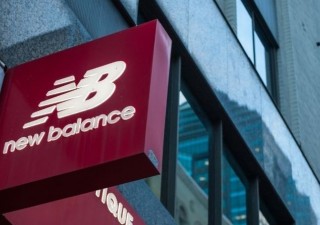US footwear manufacturer New Balance Athletic Shoe recently was sued in Guangzhou for its Chinese translation infringing the trademark Xin Bai Lun that belongs to a local brand which manufactures shoes.
The Guangzhou Municipal Intermediate People’s Court ruled that New Balance improperly used the mark and it must compensate the Chinese company Rmb98 million (US$16 million), which represents the highest amount of damages it has ordered for IP infringement since the establishment of the court, according to the China Times. Whether New Balance is going to appeal is not yet known.
The Guangzhou-based Xin Bai Lun brand owner, whose surname is Zhou, said he applied for the Bai Lun trademark in 1996, and for Xin Bai Lun in 2001, but that the US company used the “Xin Bai Lun – New Balance” mark for all advertising and marketing activities in China, which damaged his brand reputation.
The literal translation of New Balance is Xin Ping Heng, but Xin Bai Lun is a translated name that it was originally used when entering the Chinese market and has been widely known in the country.
Ethan Ma Yufeng, a partner at Orrick, Herrington & Sutcliffe in Shanghai, says smaller Chinese companies have had a streak of success in trademark disputes against larger, multinational competitors. “We have witnessed quite a few Chinese small companies’ victories in trademark litigations, such as the recent New Balance case and the iPad case in 2012. Small irms seem to be encouraged by these successful cases to accuse big companies which have invested in developing brands for infringing their trademarks. However, these seemingly unfair results could have been easily avoided if big companies value trademark protection in China sooner at the first place. Consequently, to avoid the risks of losing brands or being forced to recover ownership at a high price, companies have to pay more attention to their trademark protection strategies.”
He says that large companies, especially those originating from countries using trademark systems different from that of China, should:
- Apply to register trademarks in China as soon as possible, even before the company has decided to explore doing business in China;
- File multiclass registrations instead of single class registrations;
- File for Chinese equivalent(s) of foreign language trademarks to avoid trademark squatting;
- Keep an eye on product development and add registrations; and
- Watch out for third parties’ bad faith trademark registrations.
He adds that small Chinese companies are becoming more sophisticated and increasingly aware of the importance of IP rights. “On one hand, they will strengthen their own trademark protection just as many big companies are informed by the overall change of the legal environment.”
“On the other hand, trademark squatting and bad faith trademark litigation might remain a problem in China. Many small companies commit these actions in expectation of the original trademark owners being willing to pay a high price to regain the ownership or to get a license in China. But they are not going to beneit from these actions in a long run, because big companies are taking actions to better protect their trademarks and to make up for the loopholes left in the past,” he says.
Small companies, says Ma, knew very little about IP protection in the past. “Normally, IP lawsuits last quite a bit of time (at least 12-18 months) to get to the trial after iling the case, and may cost US$100,000 to US$500,000, and the judge has the inal decision on statutory damages, which are normally lower than the amount claimed. Thus, small companies might not have the time and money to afford suing and claiming actual damages through legal action,” he says.
But changes have been made with the revision of the Chinese Trademark Law last year, and Chinese citizens and companies are becoming increasingly aware of the importance of trademark issues as the revisions further strengthened the protection. For example, the revised law increases the highest statutory damages to Rmb3 million (US$ 480,000), which is six times the previous highest statutory damages of Rmb500,000.
Chinese central and local governments also have been making efforts to improve IP protections.
In August 2014, the Chinese government approved the establishment of three Intellectual Property courts, in Shanghai, Beijing and Guangzhou. The courts are presided over by senior judges with extensive experience in the ield of intellectual property law.
On March 3, 2015, the Nanjing city government released a plan to step up action against IP infringements and announced that it, too, will set up a dedicated intellectual property court.
Besides, with the lead of large Chinese companies, medium-sized and small companies are paying more and more attention to IP protection. Big Chinese manufactures such as Huawei and ZTE have been facing large amounts of IP infringement cases overseas, which in turn urges them to develop their own innovations and IP. The changes of large companies’ IP strategies have a bearing on small companies.
“Successful cases with large claims, the Chinese government’s efforts on IP protection, and the good leading roles played by big Chinese companies all contribute to this increased awareness. Hence, the number of newly-iled IP lawsuits for 2014 increased nearly two-and-a-half times from the previous year,” Yufeng says.







